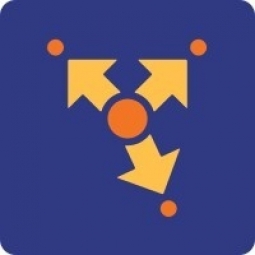技术
- 分析与建模 - 机器学习
- 机器人 - 轮式机器人
适用行业
- 教育
- 药品
适用功能
- 设施管理
- 物流运输
用例
- 时间敏感网络
- 车载远程信息处理
服务
- 数据科学服务
关于客户
罗切斯特大学医学中心 (URMC) 是位于纽约州罗切斯特的主要医疗中心。它包括大学的初级医疗、教育、研究和患者护理设施。 URMC 拥有超过 33,000 名员工,负责向纽约州罗切斯特市的 8 家主要医院和周边住宅区运送药品。这些药品(其中许多药品的保质期很短)的交付对于这些机构的护理质量和患者治疗效果至关重要。
挑战
罗切斯特大学医学中心 (URMC) 在向纽约州罗切斯特市的 8 家主要医院和周边住宅区运送药品时面临着多项挑战。庞大的服务区域和关键停靠点要求使得手动路线规划既耗时又低效。由于包括化疗药物在内的许多药物的保质期较短,需要将其运送到其他设施以免过期,情况变得更加复杂。任何分娩延迟都可能对护理质量和患者治疗结果产生严重影响。此外,随着每条路线的停靠站数量增加,路线的复杂性也呈指数级增加,使得创建高效路线变得更加困难。此前,从知名运营商到小型提供商,尝试使用其他路线解决方案都失败了,因为它们无法处理停靠站数量或考虑必要的路线限制。
解决方案
URMC 转向 Route4Me,这是 Fleetistics 推出的路线优化解决方案。 Route4Me 的解决方案包括路线优化、移动应用程序调度以及计划与实际报告。路线优化功能显着减少了规划路线的时间,从平均每天 3 小时减少到仅需 20 至 30 分钟。移动应用程序调度确保按时交付保质期短的关键药物,从而改善患者的治疗结果、护理和满意度。计划与实际报告功能使 URMC 能够更好地利用其资源并有效地扩展每日交付数量。
运营影响
数量效益

Case Study missing?
Start adding your own!
Register with your work email and create a new case study profile for your business.
相关案例.

Case Study
Case Study: Pfizer
Pfizer’s high-performance computing software and systems for worldwide research and development support large-scale data analysis, research projects, clinical analytics, and modeling. Pfizer’s computing services are used across the spectrum of research and development efforts, from the deep biological understanding of disease to the design of safe, efficacious therapeutic agents.

Case Study
Fusion Middleware Integration on Cloud for Pharma Major
Customer wanted a real-time, seamless, cloud based integration between the existing on premise and cloud based application using SOA technology on Oracle Fusion Middleware Platform, a Contingent Worker Solution to collect, track, manage and report information for on-boarding, maintenance and off-boarding of contingent workers using a streamlined and Integrated business process, and streamlining of integration to the back-end systems and multiple SaaS applications.

Case Study
Process Control System Support
In many automated production facilities, changes are made to SIMATIC PCS 7 projects on a daily basis, with individual processes often optimised by multiple workers due to shift changes. Documentation is key here, as this keeps workers informed about why a change was made. Furthermore, SIMATIC PCS 7 installations are generally used in locations where documentation is required for audits and certification. The ability to track changes between two software projects is not only an invaluable aid during shift changes, but also when searching for errors or optimising a PCS 7 installation. Every change made to the system is labour-intensive and time-consuming. Moreover, there is also the risk that errors may occur. If a change is saved in the project, then the old version is lost unless a backup copy was created in advance. If no backup was created, it will no longer be possible to return to the previous state if and when programming errors occur. Each backup denotes a version used by the SIMATIC PCS 7 system to operate an installation. To correctly interpret a version, information is required on WHO changed WHAT, WHERE, WHEN and WHY: - Who created the version/who is responsible for the version? - Who released the version? - What was changed in the version i.e. in which block or module of the SIMATIC PCS 7 installation were the changes made? - When was the version created? Is this the latest version or is there a more recent version? - Why were the changes made to the version? If they are part of a regular maintenance cycle, then is the aim to fix an error or to improve production processes? - Is this particular version also the version currently being used in production? The fact that SIMATIC PCS 7 projects use extremely large quantities of data complicates the situation even further, and it can take a long time to load and save information as a result. Without a sustainable strategy for operating a SIMATIC PCS 7 installation, searching for the right software version can become extremely time-consuming and the installation may run inefficiently as a result.

Case Study
ELI LILLY ADOPTS MICROMEDIA’S ALERT NOTIFICATION SYSTEM
Pharmaceutical production is subject to a strict set of enforced rules that must be adhered to and compliance to these standards is critically necessary. Due to the efforts of WIN 911’s strategic partner Micromedia, Lilly was able to adopt an alarm notification infrastructure that integrated smoothly with their existing workflows and emergency hardware and protocols. These raw energy sources enable the industrial process to function: electricity, WIN-911 Software | 4020 South Industrial Drive, Suite 120 | Austin, TX 78744 USA industrial steam, iced water, air mixtures of varying quality. Refrigeration towers, boilers and wastewater are monitored by ALERT. Eli Lilly identified 15000 potential variables, but limitations compelled them to chisel the variable list down to 300. This allowed all major alarms to be covered including pressure, discharge, quantity of waste water discharged,temperature, carbon dioxide content, oxygen & sulphur content, and the water’s pH.









